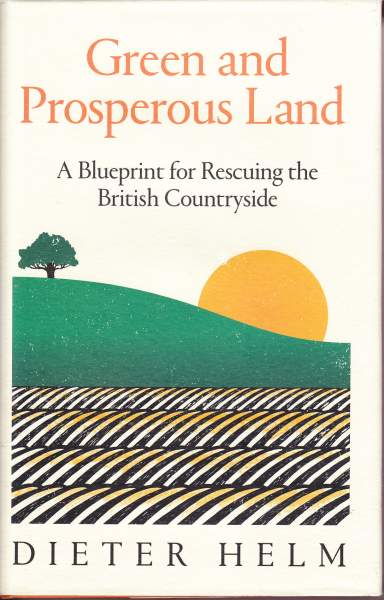
Publisher: William Collins, London
Publication Year: 2019
Binding: 2
Page Count: 336
ISBN Number: 9780008304478
Price: £19.99
Green and Prosperous Land – a Blueprint for Rescuing the British Countryside
This book arrives at the right time. Irrespective of whether and how we leave the European Union, the central tenet of Dieter Helm’s thesis is fast gaining traction: a healthy environment is fundamental to a healthy economy. The author has good credentials for presenting the arguments: he has nature firmly embedded in his upbringing, and economics filling his mind. Rarely does a book arrive, chiming so perfectly with the policy environment of the day. It explains the principles that underpin the Government’s 25 Year Environment Plan (25YEP), and how to turn ambition into practical progress.
There are three main parts to the book: The Prize, what we can hope for if we do things differently and get it right; how to build a Greener Economy; and, Planning and Funding the approach. Dieter Helm is all about evidence and numbers, applying them both to present an overarching theory and how it will work. For me, he is less good at pulling on our heart-strings about the wonder of nature, its catastrophic decline, and what the prize will look and feel like in the proposed ‘green and prosperous land’. This first section jumps around too much, is not as convincing as a result, and contains errors: he should visit Benson just down the road from Oxford to discover that Red Kites are not being pushed back into the uplands! However, two major concerns of conservationists are well addressed: our conservative avoidance of embracing the economic benefits of business to the environment, and the concept of ecosystems services not being enough on its own – we still need species-based conservation too.
The strength of the book lies, not unsurprisingly, in the economics. Once we start to read about building a greener economy, through the five lenses of rivers, agriculture, uplands, coasts and urban the arguments become authoritative and persuasive. We move from business as usual where the focus has been on stopping declines, to a massive scaling up of restoration and recovery. Three fundamental principles are key: public money for public goods; the polluter pays; and, net gain. These all roll off the tongue to those of us interested in environmental policy, central as they are to the 25YEP. But Dieter explains them fully and clearly, how they should work, and the impressive benefits they can bring. And he sets out how they should be integrated with an aggregate measure to demonstrate progress. Coordination is proposed through a ‘Nature Fund’, incorporating a range of fiscal measures and addressing the often unanswered question of where the money comes from for a better environment.
In addition to the clarity and relative simplicity of the economic case, I enjoyed the subtlety of view: for example, farming should move away from the ‘apartheid’ of chemical versus organic; the economic case is not exclusive, intrinsic values remain important too. Where I am less convinced is in the need to start with a ‘blank sheet’, in terms of the institutional arrangements for delivery.
This book is urgent and important. It should be required reading for all interested in turning the Government’s 25 year environment ambition into reality. I wonder if, in 2050, the next generation will recognise that this book was part of a Rachel Carson-style moment that helps to kick-start the wholesale restoration and recovery of nature: I hope so.
Book reviewed by Andy Clements
Buy this book




Share this page